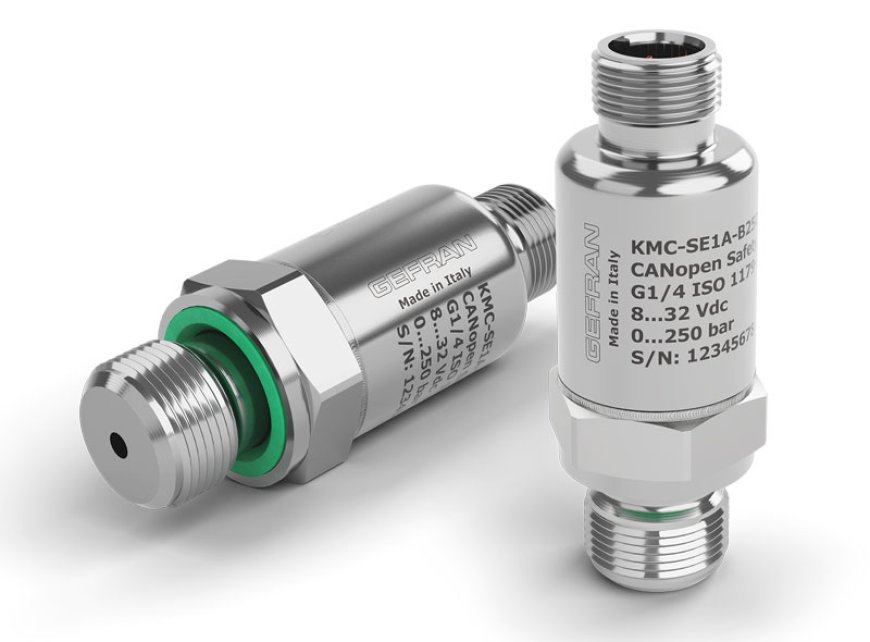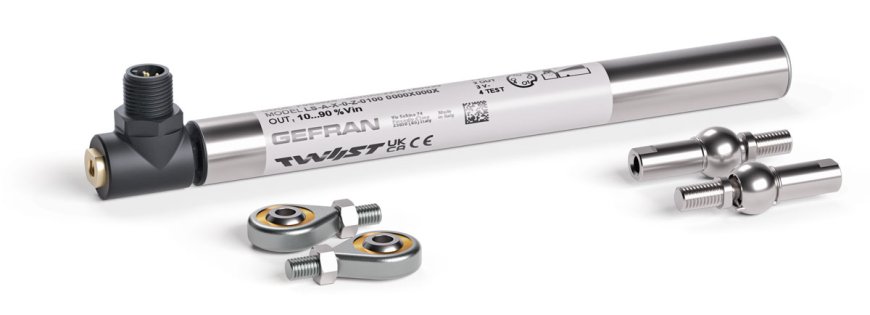Gefran’s products can be seamlessly adapted to existing machinery.

Kalpesh Desai
How is the demand for machine control technology products evolving in the construction sector? What are the key factors driving this demand?
The demand for machine control technology products in the construction sector is undergoing significant evolution, driven by several key factors. Gefran Spa, active since 1980 in the development of sensors, has witnessed a growing interest over the past ten years, establishing itself as a reference supplier in the mobile hydraulics market, particularly within the construction segment. In recent years, leading vehicle manufacturers worldwide have sought customised sensors, transitioning from analogue output to more advanced systems such as CANopen or CAN SAE J1939 field buses. This shift reflects a demand for enhanced safety and efficient communication.
Who are the major players in this field, and how does your company differentiate itself in terms of technology and innovation?
The demand for machine control technology products in the construction sector is evolving rapidly, with an increasing focus on precise movement control to safeguard both machinery and operators. Vision sensors, combined with pressure, position, force/weight, and temperature sensors, enable a more comprehensive control through PLCs, identifying inefficiencies in processes (such as excessive digging), high consumption rates, and reducing operator errors (such as digging too deep and intercepting previously laid cables).In this context, Gefran is introducing sensors capable of recognising spatial movement, known as TWIIST, which measure linear and angular position in a multivariable manner. These advanced sensors contribute to more precise and secure control of construction machinery, which is evolving swiftly to meet the demands of a constantly changing sector. Key factors driving this demand include the need to enhance productivity, reduce safety risks, and optimise resource utilisation. The adoption of advanced control technologies allows for the achievement of these objectives, making construction machinery smarter, more efficient, and safer.

What are the latest advancements in your machine control products? How do these innovations enhance the performance and efficiency of construction equipment?
Gefran will soon introduce a successful KMC pressure sensorfeaturing CANopen Safety field bus output, marking an important step toward adopting safer and more integrated technologies. Moreover, the adoption of digital technologies and telematics systems has enabled more precise and secure monitoring of machinery, contributing to improved productivity and safety on construction sites. These developments are essential for addressing industry challenges, such as the need to mitigate risks and optimise operations.
How do your products integrate with existing machinery? Are there any challenges in retrofitting older equipment with new control technologies?
Gefran’s products can be seamlessly adapted to existing machinery, specifically, our sensors dedicated to the mobile hydraulics sector are perfectly suited for retrofit options. This allows already operating machinery to be easily updated with the latest communication protocols, replacing old sensors that would hinder performances. To do so, it is necessary to introduce a CAN communication line instead of the analogic one, or alternatively, you can adopt a CAN SAE line among other components already present in the vehicle. Additionally, the former PLC system will have to be upgrade with a PLC of newest generations.
What are the standout features of your machine control technology that contribute to its effectiveness and reliability in construction operations?
On the current market there a various manufacturer of sensors similar to ours, but none of them have portfolio as wide and technologically advanced as Gefran’s. A prime example
would be our multivariable TWIIST contactless position sensor, which provides the possibility to measure additional variables with respect to position (speed, triaxial inclination, acceleration and vibration, electronics temperature) combined with the Can Open protocol, allows to benefit
from the advantages of Industry 4.0 in terms of preventive product and process maintenance.
Gefran invests annually 6% of its profits in Research and Development projects and activities, collaborating with universities to identify which new technologies to introduce into the mobile hydraulics sector, in order to provide the highest standards in terms of safety, efficiency and technology to our customers.

What measures have been implemented in your products to ensure they withstand the harsh environments typical of construction sites?
We test our products in the laboratory with various procedures, such as accelerated tropicalisation, vibration and shock, in order to fully recreate the environmental conditions in which our sensors will be placed. In addition, Gefran has always printed its circuit boards in-house using electronic components of the highest tested quality. The sensor casing is made of PBT plastic materials that are resistant to acids, UV rays and salt spray. Since its beginnings, our company has adopted an integrated vertical production system, which incorporates several key production steps, allowing full quality control of each process. Our probes are produced worldwide in our factories, with dedicated robot islands, using collaborative robots to support, for example, the production of our GIBinclinometers. Each of our products is tested on dedicated benches, e.g. pressure and temperature tests, before being packaged for shipment to the customer.
What are the maintenance protocols for your machine control systems? How do they contribute to the longevity and sustained performance of the equipment?
The maintenance protocol for each product is listed in its installation and user manual, with precise indications in case maintenance is required on the sensor itself. On the vehicle management aspect, for example, CAN-based transducers provide cyclic and acyclic data such as maximum temperature, vibration, shock and peak pressure.
The information generated is examined both in the cloud by the dealer and by the in-vehicle PLC in order to provide control and, if necessary, block improper use of the equipment and predictive vehicle maintenance. The latter feature allows the user to predict possible part failures, thus intervening before permanent damage occurs.








